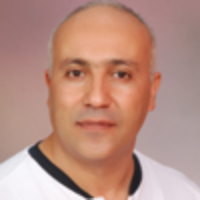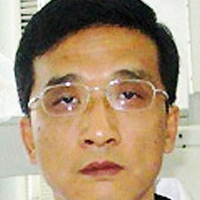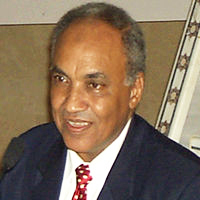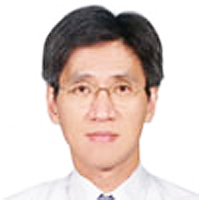Risk of developing eating disorders through the misperception of the body image and the adoption of bad eating habits in a sample of young volleyball athletes
Published on: 8th March, 2021
OCLC Number/Unique Identifier: 8980363455
Objective: This preliminary study focused on the description of some dysfunctional perceptions of the body image and eating habits in a sample of young.
Methods: The results obtained by 55 amateur and professional volleyball players belonging to volleyball sports clubs located in the province of Reggio Emilia were examined. The age of the sample is in a range between 11 and 44 years. The participants completed the Pisa Survey for Eating Disorders (PSED), a questionnaire aimed at examining eating behavior and the perception of one’s body image. The athletes’ height and body weight were subsequently detected through direct measurement.
Conclusion: The data collected through the self-evaluation questionnaire and the measurements carried out by the study made it possible to analyze the perception of the body image and the eating habits of the volleyball players belonging to the sample and to compare them with the data in the literature. The data, albeit preliminary, allow us to confirm the existence of the discrepancy between the real body image and the desired one, in a group of young athletes, who favors the adoption of non-adaptive coping strategies to control one’s own weight and body shapes typical of the vicious circle - strict diet, bingeing episodes, compensatory behaviors - which characterizes eating disorders (ED). It is therefore considered essential that body image assessment is a practice implemented in the assessment routine of these athletes, especially in consideration of the fact that body image disturbance is a very common feature in this category and is one of the main risk factors of EDs.
PISA Syndrome-Orthopedic manifestation of a neurological disease?
Published on: 26th May, 2020
OCLC Number/Unique Identifier: 8603897033
Pleurothotonus, commonly known as Pisa Syndrome (PS), is a rare neurological disorder characterized by lateral bending of the trunk with a tendency to lean to one side. This is typically mobile and resolves in supine position. It often presents as an incapacitating symptom of underlying neurodegenerative conditions like Parkinson’s disease, alzheimer’s disease, multisystem atrophy, dementia with Lewy bodies, progressive supranuclear palsy and even subacute sclerosing panencephalitis. It is known to be associated with neuroleptics, dopaminergic agents, valproic acid and lithium. PS is also seen in neurosurgical disorders like subdural hematoma, normotensive hydrocephalus, or as a late complication of pallidotomy in patients with PD. It can present either as an acute emergency or can develop gradually over time.PS tend to happen in coronal plane and can be controlled and managed if diagnosed in early stage. However, a chronic form known as “camptocormia” occurs often in a combined fashion with anteroposterior flexion which can improve to some extent, remain stable or even get worse. Pathophysiologic mechanism is not completely understood. This review will discuss all the updated literatures published in PS in terms of prevalence, pathophysiology, clinical manifestation, and treatment modalities.
Influence of corneal spherical aberration, anterior chamber depth, and ocular axial length on the visual outcome with an extended depth of focus wavefront-designed intraocular lens
Published on: 8th August, 2022
Purpose: The purpose of the study was to evaluate which ocular parameters have an impact on visual results obtained after an extended depth of focus (EDF) wavefront-designed intraocular lens (IOL). Setting: The study was conducted in three Italian centers (private practice in Lucca and two ambulatory surgical centers in Pisa and in Rome) from 01/09/2014 to 30/09/2015.Design: The study population included 178 eyes of 91 patients who had cataract surgery and implantation of an EDF wavefront - designed IOL (Mini Well Ready - SIFI Med Tech S.r.l.).Methods: Preoperative and postoperative refractive corneal spherical aberration (SA), ocular axial length, or anterior chamber depth were measured.Results: The majority of patients were spectacle-independent for near, intermediate, and distance vision and no one reported disturbing halos or glare. No overall significant differences were observed when stratifying anterior chamber depth (ACD) and ocular axial length (AL) by uncorrected distance visual acuity (UCDVA); p = 0.465 and 1.000 respectively, corrected distance visual acuity (CDVA); p = uncorrected near visual acuity (UCNVA); p = 1.000 and 0.728 respectively; p = 1.000 under both parameters and halos; 1.000 under both parameters. Still, there was a statistically significant difference when stratifying SA with 5 mm only by UDVA (p = 0.040).Conclusion: These results are consistent with similar outcomes in the scientific literature as measured with tests of visual acuity, either with or without optical correction. We also demonstrated that these IOLs can be used in myopic and hyperopic eyes, although it may be useful to evaluate the preoperative corneal SA to achieve better results.
Success, Survival and Prognostic Factors in Implant Prosthesis: Experimental Study
Published on: 19th December, 2023
The primary objective of this study was to detect the success and short-term survival rate of dental implant prosthetic therapy. The valuation of a possible relationship between the general and local clinical conditions of the patients (presence of risk factors and type of dental implant-supported prosthesis) and the satisfaction perceived by the patient, with success and survival of implant devices was investigated.The sample trial consisted of 23 patients, for a total of 50 dental implants supporting a prosthetic therapy. Preliminarily, an analysis of averages and frequencies of the anamnestic data was presented, as numbers and percentages. The implant success rate was calculated by assessing whether the implants fulfilled the success criteria defined by the Pisa Consensus Conference. The ANOVA test was used to check whether there was an association between the success of the implant device, the anamnestic data collected, and the type of prosthesis supported by the implants. Finally, the survival rate was calculated using the Kaplan - Meier method.The 2-year success rate of 50 implants was assessed at 98%. The 2-year survival rate was 97%. Finally, sex, age, compensated diabetes, a smaller and equal number of cigarettes per day (10 per day), the BOP, and the type of titanium dental implants supported by prosthesis, do not determine a change in success and are therefore not adequate parameters to predict the outcome of implant success. Following the results obtained, it is appropriate to continue the research by expanding the clinical observation times in order to obtain more solid scientific and clinical evidence.
















